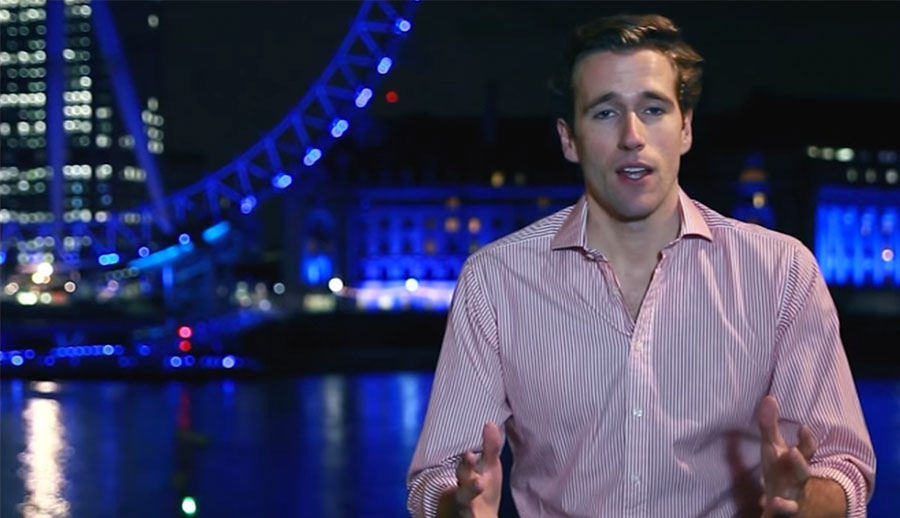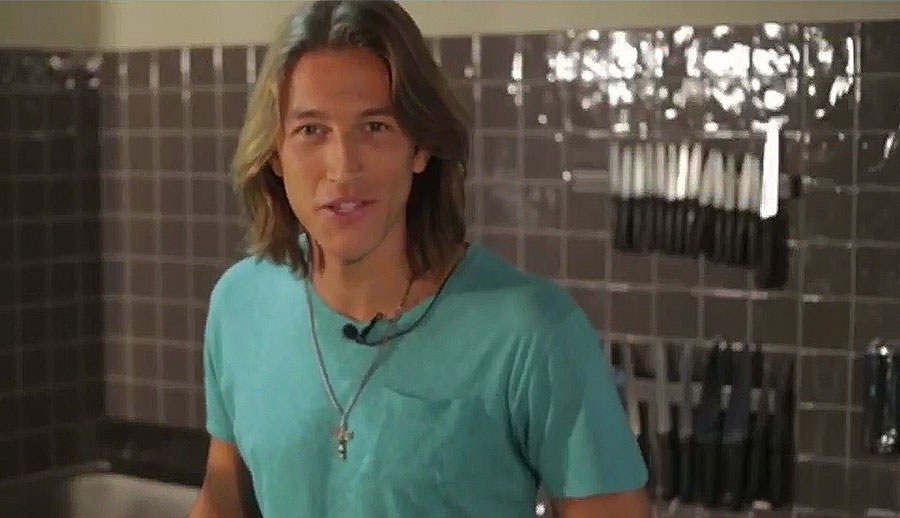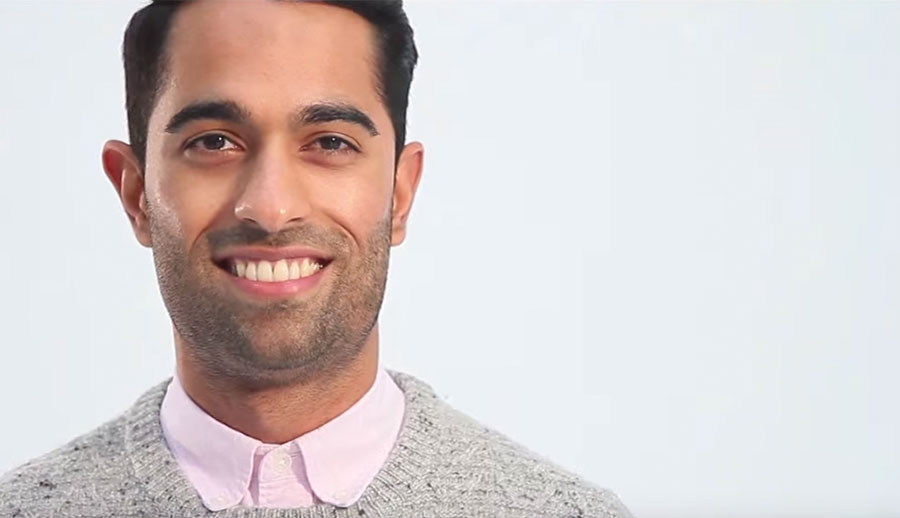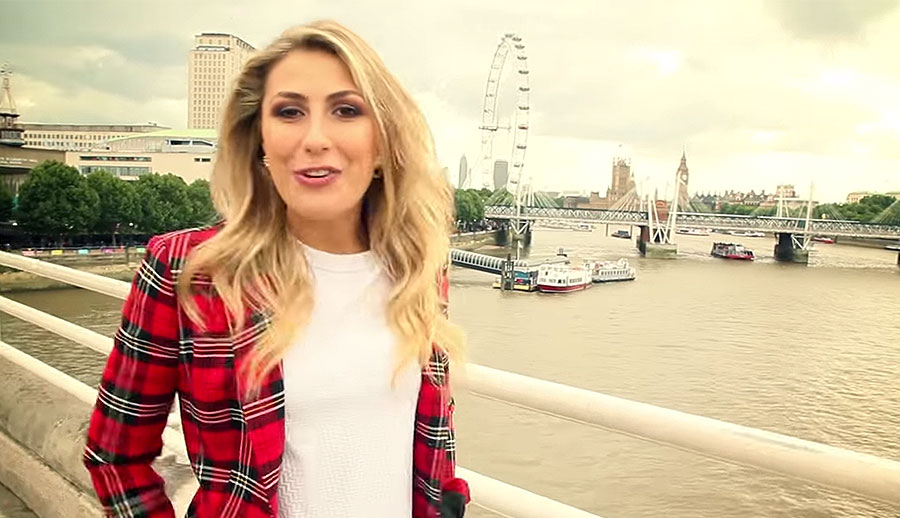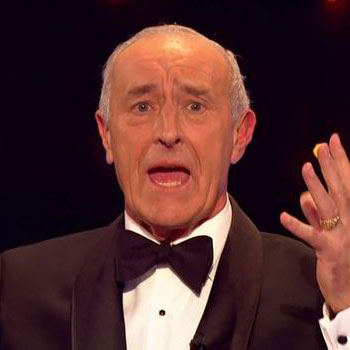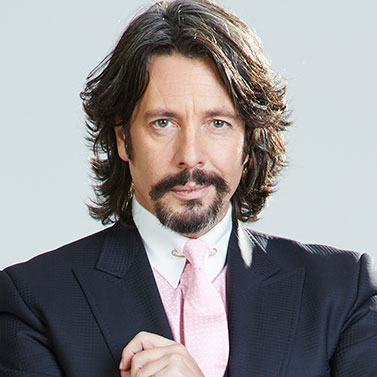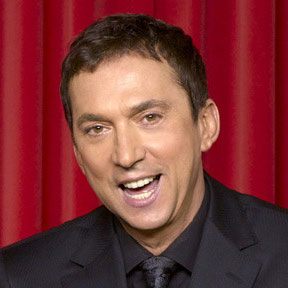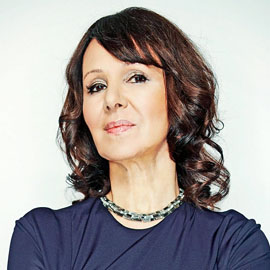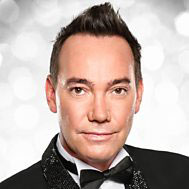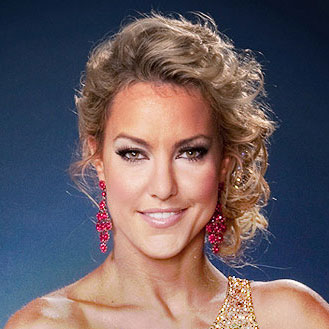-
.
-
1 To 1 Programme
- Tailor-made presenter coaching/filming on location, studio or both for presenters, influencers or business people to maximise your potential.
- Work with BAFTA winning Producers and BBC Talent Executives for the BBC, ITV, Channel 4 and top brands like ASOS, Amazon & Vogue.
- You’ll learn OUR secrets that have helped create TV’s and social media's biggest presenters.
- We are the ONLY presenter training company endorsed by TV agents and TV channels.
- Includes an initial consultation to discuss your needs, personal brand, how to market yourself and ideas for your filming day.
- Incredible success rate - 100% 5 star reviews. Amazing exclusive job and networking opportunities.
WHY WE’RE VOTED THE BEST
Displaying items by tag: presentation skills training
BAFTA-Winning Production Insights for Better Business Presentations
In our years as BAFTA Award-winning television producers, we learned countless lessons about what makes content truly compelling. These weren't abstract creative principles—they were practical techniques refined through the unforgiving standards of broadcast television.
Now, working with business professionals at The Presenter Studio, we've discovered something valuable: the production insights that earned us industry recognition translate directly into more effective business presentations.
Here are the key lessons from behind the camera that can transform what you do in front of an audience.
Insight 1: Pre-Production Determines Success
In television, there's a saying: "Fix it in pre-production, not in post-production."
When we were producing BAFTA-winning content, we spent weeks planning before a single frame was filmed. We knew exactly what story we were telling, what shots we needed, what questions we'd ask, and how pieces would fit together.
The actual filming? That was just executing a carefully designed plan.
Amateur productions do the opposite. They start filming and hope to "find it in editing." The results are always weaker, no matter how much time they spend in post-production trying to rescue poorly planned content.
How this applies to business presentations:
Most business presentations fail during preparation, not delivery. People start building slides before they've clarified their core message. They haven't thought about their audience's perspective. They haven't structured their narrative arc. They're hoping to "fix it" during delivery or with impressive visuals.
At The Presenter Studio, we teach a pre-production approach to presentations:
- Define your exact objective. What specific action or decision do you want from this presentation? (In TV, we'd call this knowing your story.)
- Understand your audience deeply. What do they care about? What are their concerns? What's their knowledge level? (This is audience research—critical in television.)
- Structure your narrative. What's your opening hook? What's your core argument? What evidence supports it? What's your closing call to action? (This is your production outline.)
- Plan your key moments. Which three points absolutely must land? Where will you slow down? Where will you speed up? (These are your "money shots.")
Only after this pre-production work should you build slides or practice delivery.
We've seen executives transform their presentation effectiveness simply by applying television-level pre-production discipline. The content often stays similar, but it's now structured for maximum impact instead of random information delivery.
Insight 2: The First 30 Seconds Are Everything
In television, we obsessed over openings. We knew that if we didn't hook viewers in the first 30 seconds, they'd change the channel. No second chances.
This led to a specific discipline: every piece of content had to open with something immediately interesting. A provocative statement. A compelling visual. An intriguing question. A surprising fact.
We never opened with context or setup or background. We opened with the most interesting thing we had, then provided context after we'd earned attention.
How this applies to business presentations:
Most business presentations open terribly.
"Good morning everyone. Thanks for joining. Today I'll be covering three topics. First, some background on the project. Then we'll look at methodology. Finally, we'll review findings."
This is the equivalent of a TV show opening with: "Welcome to this documentary. In the next hour, we'll explore several themes related to our topic. Let's begin with some historical context."
No one would watch past the first 15 seconds.
Here's what we teach instead, using our broadcast production approach:
Open with your most compelling point. The surprising finding. The bold recommendation. The provocative question. The specific benefit to your audience.
Example transformation:
Before: "Thanks for being here. Today I'm going to present Q3 results and discuss strategic implications for the coming quarter."
After: "Our customer acquisition cost dropped 47% this quarter. That's not a typo - forty-seven percent. Let me show you exactly how we did it and why this changes everything about our growth strategy."
Which would you pay attention to?
Insight 3: Show, Don't Tell (Literally)
Television is a visual medium. One of the first things you learn in production is: if you can show it, show it. Don't have someone describe a beautiful location—show the location. Don't have someone explain how something works—show it working.
During our BAFTA-winning projects, we spent enormous effort finding ways to visualize complex information. Abstract concepts became concrete demonstrations. Data became graphics. Explanations became sequences.
Not because it looked pretty. Because visual information is processed 60,000 times faster than text, and is remembered far longer.
How this applies to business presentations:
Business presentations are typically text-heavy. Slides full of bullet points. Speakers reading information that audiences could read faster themselves.
This is the opposite of television's "show, don't tell" principle.
When we work with executives at The Presenter Studio, we push them toward visual demonstration:
- Instead of listing benefits, show a before-and-after comparison
- Instead of describing a process, walk through a specific example
- Instead of presenting data in tables, create a simple visual that reveals the pattern
- Instead of explaining a concept, demonstrate it with a prop or analogy
One client was presenting a complex operational efficiency improvement. His original presentation was 30 slides of process flows and data tables. We helped him restructure around three specific examples that demonstrated the improvement in action. Same information, radically different impact.
The television producer's instinct - "How can we show this instead of telling it?" - transforms presentations.
Insight 4: Pacing Is an Active Choice, Not an Accident
In television editing, pacing is deliberate. Fast cuts create energy and excitement. Slow sequences create tension or allow emotional moments to breathe. The best productions vary pacing strategically—moments of intensity followed by moments of reflection.
When we were producing award-winning content, we'd spend hours in editing adjusting pace. A few seconds here or there completely changed how content felt.
Pacing wasn't something that "just happened." It was crafted.
How this applies to business presentations:
Most business presenters have one pace: steady and moderate. They move through all content at roughly the same speed, regardless of what they're covering.
This is exhausting for audiences. It's like watching a film where every scene has identical pacing—no variation, no rhythm, no dynamic range.
We teach television-style pacing variation:
- Speed up through background information and context
- Slow down dramatically for your key points
- Pause completely after important statements
- Pick up pace when telling stories or examples
- Decelerate as you approach your conclusion
One technique we borrowed directly from television editing: the "two-beat pause." After delivering your most important point, pause for two full beats (roughly two seconds). This feels uncomfortably long when you're presenting. It's perfect for your audience—giving them time to absorb what you just said.
In television, we'd hold on a significant visual for those extra beats. In presentations, you hold in silence. Same principle, same impact.
Insight 5: Technical Quality Affects Credibility
Here's something we learned producing for BAFTA consideration: technical quality isn't just aesthetic. It affects how seriously audiences take your content.
Poor audio makes viewers question content quality. Bad lighting makes even compelling stories feel amateurish. Shaky camera work undermines credibility.
This isn't shallow. It's psychological. Audiences unconsciously use production quality as a proxy for content quality.
How this applies to business presentations:
When you're on video calls with poor lighting and bad audio, audiences unconsciously perceive you as less credible and less senior—regardless of what you're saying.
When your slides are cluttered and amateur-looking, people doubt the quality of your thinking.
When your physical presence is low-energy, audiences assume your ideas lack energy.
At The Presenter Studio, we apply television production standards to business presentations:
For video presence:
- Invest in basic lighting (even a £30 ring light transforms presence)
- Use a good microphone (laptop mics undermine credibility)
- Frame yourself properly (learn the rule of thirds from photography)
- Create an uncluttered background (or use tasteful blur
Why TV Presenter Skills Matter in the Boardroom
When we founded The Presenter Studio 12 years ago as BAFTA Award-winning television producers, our focus was training aspiring TV presenters. We taught autocue reading, camera presence, and broadcast delivery techniques.
Then something interesting happened. Corporate executives started approaching us.
"Can you teach us what you teach TV presenters?" they'd ask. "We need to present to boards, investors, and large teams. We need to be as compelling as people on television."
Initially, we weren't sure our TV expertise would translate. We were wrong. It translates perfectly. Here's why television presenter skills have become essential for business success.
The Attention Economy Hit Business Hard
Television presenters have always competed for attention. Change the channel and they're gone. They learned to be compelling within seconds or lose their audience.
Now business presenters face the same challenge. Your board members have phones buzzing with notifications. Your team is on video calls with email open in another window. Your investors are evaluating multiple opportunities simultaneously.
The skills TV professionals use to capture and hold attention—strong openings, strategic pauses, vocal variety, purposeful movement—aren't just nice to have anymore. They're essential for ensuring your message even gets heard.
Video Is Now the Default Communication Medium
Remember when "presenting" meant standing in a conference room with slides? Those days are gone.
Now you're on Zoom calls, recording video messages, appearing in company broadcasts, and maybe even doing media interviews or conference speaking. You're on camera constantly—just like a TV presenter.
Yet most businesspeople never learned on-camera skills. They don't know where to look, how to frame themselves, or how to project energy through a lens. TV presenters master these skills as fundamentals. Business professionals need them just as urgently.
Through our work at The Presenter Studio, we've seen countless executives transform their video presence by applying simple broadcast techniques—proper camera positioning, energy projection, and the specific eye contact patterns that work on screen versus in person.
Authenticity Has Become a Competitive Advantage
Here's an interesting paradox: TV presenters are trained performers, yet the best ones seem completely authentic. How?
They've learned to be genuinely themselves while optimizing their delivery. They know how to eliminate distracting habits without becoming robotic. They understand how to project their authentic personality in a way that translates through cameras and reaches audiences.
Business leaders face the same challenge. Stakeholders are sophisticated. They can spot inauthentic corporate speak immediately. Yet completely unrehearsed presentations often ramble or miss key messages.
The solution? The TV presenter's approach: deep preparation that allows for authentic delivery. Know your message so thoroughly that you can deliver it conversationally. This is exactly what we teach in our corporate presentation training.
Storytelling Has Moved from "Nice to Have" to "Must Have"
Television professionals understand something fundamental: facts alone don't persuade. Stories do.
A TV documentary doesn't just present information. It takes you on a narrative journey with tension, resolution, and emotional connection. This isn't manipulation—it's how human brains process and remember information.
Business presentations increasingly require the same approach. Investment pitches need narrative arc. Change management communication needs emotional resonance. Strategy presentations need to take audiences on a journey.
We've worked with CEOs who had brilliant strategies but couldn't get buy-in. The problem wasn't their thinking—it was their presentation. Once we applied storytelling techniques from our BAFTA-winning television production background, those same strategies suddenly became compelling. The content hadn't changed. The delivery had.
Recovery Under Pressure Is a Daily Requirement
TV presenters work with the knowledge that anything can go wrong—teleprompters fail, guests don't show up, technical issues arise—and they must handle it gracefully while maintaining credibility.
Business leaders face similar pressures. A key slide doesn't load. Someone asks a hostile question. The presentation time gets cut in half. A crisis emerges mid-meeting.
The executives who handle these moments well share something with professional broadcasters: they've trained for recovery. They have techniques for maintaining composure, pivoting smoothly, and turning problems into opportunities to demonstrate competence.
This is why we incorporate "crisis scenarios" into our corporate training. We learned from years of television production that you can't train someone to "stay calm under pressure" with advice alone. You need to create realistic pressure situations and practice recovery techniques until they become automatic.
Personal Brand Now Matters for Everyone
TV presenters have always understood that they are their brand. Their credibility, trustworthiness, and likability directly impact their career success.
This reality has now extended to business professionals. Your presentation style shapes how you're perceived as a leader. Your video presence influences whether people trust your judgment. Your ability to communicate vision determines whether teams follow you.
We've seen talented executives plateau in their careers not because they lack strategic thinking, but because they lack presentation skills. They're perceived as less confident, less visionary, or less credible than they actually are—simply because they never learned on-camera techniques.
Meanwhile, others accelerate their careers by mastering these skills. They're the same person with the same capabilities, but now they're perceived differently because they present differently.
The Skills Are Learnable (Not Innate)
Here's the most important thing we've learned training both TV presenters and business professionals over 12 years: these skills are completely teachable.
People assume TV presenters are naturally charismatic or comfortable on camera. They're not. They've been trained in specific techniques—where to look, how to modulate their voice, how to use gestures purposefully, how to structure content for impact.
When we teach these same techniques to executives, they develop the same capabilities. The CFO who seemed stiff becomes compelling. The technical director who rambled becomes clear and concise. The CEO who struggled with credibility starts commanding rooms.
The difference between an effective presenter and an ineffective one isn't talent. It's training.
What This Means for Your Organization
If your business requires people to present - to boards, investors, clients, teams, or the public - then TV presenter skills are no longer optional professional development. They're core business skills.
The executives who present well get buy-in for their ideas. They inspire their teams. They represent your organization credibly. They advance their careers and contribute to organizational success.
Those who present poorly - even if they're brilliant strategists - struggle to get ideas heard, teams engaged, or stakeholders convinced.
At The Presenter Studio, we've built our entire methodology around translating professional broadcast techniques into practical business applications. We know these skills matter because we've seen the career and organizational impact when people master them.
The Bottom Line
The lines between television presentation and business presentation have dissolved. You're on camera regularly. You compete for attention constantly. You need to be authentic, compelling, and credible under pressure.
These were always requirements for TV presenters. Now they're requirements for business success.
The good news? Everything TV professionals know about effective presentation is learnable. You don't need natural charisma or performance background. You need the right training from people who understand both broadcast excellence and business context.
That's exactly what we provide.
Ready to bring television-level presentation skills to your business? The Presenter Studio's BAFTA-winning team specializes in translating broadcast techniques into corporate impact.
What Working with Celebrities Taught Us About Presentation Training
Over our 12 years as BAFTA Award-winning television producers, we've had the privilege of working with numerous high-profile celebrities. While we can't name names, we can share the fascinating lessons these experiences taught us about what truly makes someone compelling on screen—and how those insights transformed our approach to presentation training.
Lesson 1: Charisma Isn't What You Think It Is
Early in our production career, we assumed celebrities were naturally magnetic. We were wrong.
Working with an A-list actor on a documentary series, we discovered something surprising: off-camera, they were softly spoken and reserved. But the moment filming began, they transformed. Not through volume or energy, but through something more subtle—absolute presence in the moment.
What this taught us: Charisma isn't an inherent trait. It's a skill of being fully present and genuinely interested in your message and audience. We now teach business presenters this exact technique. The executives who seem most "naturally charismatic" after our training aren't extroverts—they're the ones who learn to be completely present rather than thinking ahead or worrying about judgment.
Lesson 2: Authenticity Beats Perfection
We once worked with a beloved television personality who insisted on doing multiple takes for every segment, convinced they needed to be "perfect." The results were strangely flat. When we convinced them to do just one take, accepting any small stumbles, the footage was electrifying.
The imperfections made them human. The real-time thinking made them relatable.
What this taught us: We stopped teaching corporate clients to memorize presentations word-for-word. Instead, we teach the "TV presenter's approach"—know your key messages deeply, but allow yourself to find the words in the moment. Business audiences don't want polish; they want authenticity. A small stumble followed by a genuine smile is more compelling than robotic perfection.
Lesson 3: The Pre-Performance Ritual Matters
Almost every celebrity we've worked with has a pre-camera ritual. One would do specific breathing exercises. Another would shake out tension while making unusual facial expressions. A third would pace and talk to themselves.
At first, these seemed like quirks. Then we realized: these rituals weren't about superstition. They were about reaching a specific mental and physical state before performing.
What this taught us: We now build personalized "pre-presentation rituals" with every client. For one executive, it's two minutes of power poses. For another, it's a specific breathing pattern. For a third, it's reviewing three photos that remind them why their message matters. The ritual itself matters less than having a reliable way to access your optimal state.
Lesson 4: "Difficult" People Are Usually Just Scared
We worked with one celebrity who had a reputation for being challenging. They questioned everything, resisted direction, and seemed defensive. Productions dreaded working with them.
During our project, we realized something: underneath the difficult behavior was profound fear of looking foolish. Once we demonstrated that our direction made them look better, not worse, they became collaborative and generous.
What this taught us: When business clients resist presentation training—"I don't need this" or "This feels unnatural"—it's rarely arrogance. It's fear. Now we address that fear directly: "It's completely normal to feel uncomfortable. Every celebrity we've worked with feels this way initially. Let's make this safe to experiment."
This shift in approach transformed our results. Resistant clients become our biggest success stories once they feel psychologically safe.
Lesson 5: The Best Performers Obsess Over Feedback
The celebrities who remained at the top of their field shared one trait: they were insatiable for feedback. After every take, they'd ask: "How was that? What can I adjust? Did that moment land?"
The ones whose careers faded? They assumed they already knew.
What this taught us: We now build feedback loops into all our corporate training. We record presentations, review them together, and celebrate improvements. The executives who transform fastest aren't the naturally gifted ones—they're the ones who actively seek feedback and iterate.
One CEO we trained watched herself present, winced, and said, "I look so stiff!" Instead of being defensive, she asked, "What specific changes would help?" Six months later, her board commented on her "remarkable transformation." She had the same attitude toward improvement that we'd seen in world-class celebrity talent.
Lesson 6: Environment Shapes Performance
On set, we learned that celebrities perform differently depending on the environment we create. Harsh lighting and a tense crew produce tight, self-conscious performances. Warm lighting and a supportive atmosphere unlock natural brilliance.
What this taught us: We help companies redesign their "presentation environment." This means everything from room setup to how feedback is given in rehearsals. One client was struggling with team presentations. The issue wasn't skill—it was that they rehearsed in a stark conference room with fluorescent lighting while colleagues scrolled phones. We changed the environment, and performances improved immediately.
Lesson 7: Recovery Is More Important Than Mistakes
Every celebrity we've worked with has flubbed lines, lost their place, or had technical issues on camera. The difference between professionals and amateurs isn't avoiding mistakes—it's how quickly they recover.
The best celebrities would acknowledge a mistake with a quick smile, reset, and continue without dwelling on it. That recovery became part of their charm.
What this taught us: We now spend significant training time on recovery techniques. What do you do when you lose your place? How do you handle a technical failure? What's your response when someone asks a question you can't answer?
Business presenters who master recovery actually appear more confident than those who never make mistakes. Audiences relate to graceful recovery. It's human.
The Bottom Line
Working with celebrities didn't teach us that some people are simply "born presenters." It taught us the opposite: the most compelling communicators use specific, learnable techniques. They prepare ritually, welcome feedback, embrace authenticity over perfection, and practice recovery.
At The Presenter Studio, we've spent 12 years translating these insights from celebrity-level television production into practical training for business professionals. The techniques that work for on-screen talent work for everyone—because they're based on how human communication actually works, not mystical "natural talent."
Want to present with the confidence and impact of the on-screen talent we've trained? Discover how The Presenter Studio's BAFTA-winning approach can transform your presentation skills.
How to Speak with Impact: Lessons from the World of TV and Media
Television teaches a simple rule: if you cannot engage your audience in the first few seconds, you have already lost them.
These lessons from the world of TV can transform business presentations.
Energy and presence are crucial, as the audience responds to the speaker’s energy before they process the words.
Storytelling techniques help maintain engagement, following a hook, build, and resolution structure.
Handling challenging questions with preparation and composure is essential, and body language, whether on camera or on stage, communicates as much as words.
Simplifying your message and avoiding clutter ensures clarity and retention.
To apply these lessons in business, record yourself to review your delivery, practice concise soundbites, and rehearse with attention to pacing and energy.
Mastering these skills can make your presentations as engaging as the best television content and the Presenter Studio media training is designed to guide you through these techniques.
How Presentation Skills Training Transforms Business Performance
Businesses that invest in employee presentation skills reap measurable returns. When people communicate better, decision-making hastens, ideas are shared more clearly, and teams feel more confident.
One of the major benefits of investing in presentation skills training is enhanced confidence. Employees who are more confident in presenting are more likely to speak up in meetings, pitch new ideas, lead projects and represent the company externally. Confidence reduces errors, improves clarity and builds credibility.
Another benefit is improved persuasion and influence. Whether you are presenting to clients, stakeholders, or internally to leadership, how convincing you are depends on how well you can structure arguments, marshal evidence, speak to value and anticipate counterarguments. Those who are trained in these areas tend to win more buy-in.
Presentation skills training also supports clarity and efficiency. Think about a meeting where someone speaks unclearly or wanders off topic. Time is wasted, misunderstandings happen, decisions are delayed. Training helps people organise content, stay on message, use visual aids effectively, and deliver with greater purpose.
It can also reduce stress and increase adaptability. Presenters who have practiced handling interruptions, unexpected questions or technical issues respond more effectively instead of panicking. They are less likely to be thrown off by surprises.
When multiple people in an organisation improve their presentation skills, the collective benefit amplifies. Internal communications flow more smoothly. Leadership messages are conveyed with greater authority. The company brand is reinforced when client-facing staff present with polish. Finally, engagement improves. Audiences are more likely to pay attention, act on recommendations and leave meetings or presentations feeling they gained something.
If you want to drive this transformation in your team or across your business, structured training is key. The presentation skills training from Presenter Studio available at https://www.presenterstudio.com/business-presenter-training/presentation-skills-training
Techniques to Improve Your Presentation Skills
Improving presentation skills is a journey as much as a destination. Small changes in technique accumulate to make a big difference. Below are practical strategies you can begin applying now.
Begin with your audience in mind. Before drafting your presentation, think about who will be listening, what they already know, what they care about, and what their assumptions might be. Tailoring your message to the audience increases relevance and connection.
Work on your opening. First impressions set the tone. Opening with a story, a provocative question, a surprising fact, or something that elicits emotion draws people in and invests them in what follows.
Structure your content clearly. Group related points together. Use transitions so listeners can follow where you are going. Signal when you move from one section to another. Use summaries and signposting to keep structure visible.
Use stories, analogies and examples to make your points concrete. Abstract concepts are easier to understand when anchored in real-life experiences. Stories help people to feel, imagine and remember.
Practice voice, tone, pacing and pauses. Speak clearly and with variation. Pauses can emphasise a point, let the audience absorb what you have said, or mark transitions. Speaking too fast or with monotone voice risks losing engagement.
Use nonverbal communication consciously. Eye contact creates connection; gesture to emphasise; posture influences how you are perceived. Movement can help refresh audience interest but should be purposeful.
Design visual aids that support rather than distract. Use clean slide layouts, minimal text, powerful images. Only include visuals that help explain or emphasise your message. Avoid cramming too much content on any one slide.
Rehearse under realistic conditions. Stand up, time yourself, use any technology or slides you will use, simulate Q&A. Recording yourself can help you observe habits you might be unaware of.
Manage nerves and anxiety. Deep-breathing techniques, visualisation, practising before a friendly audience, arriving early to check equipment and space can help calm pre-presentation jitters.
Seek feedback and refine. After presenting, reflect on what went well and what did not. Ask trusted colleagues or mentors for feedback. Use that to adjust content, style, pacing. Over time, iteration improves quality substantially.
If you are serious about developing all these areas in a systematic way, the presentation skills training offered by Presenter Studio might be just what you need. Their programme at https://www.presenterstudio.com/business-presenter-training/presentation-skills-training
Why Presentation Skills Matter More Than Ever
In a world overloaded with information, how you present an idea often determines whether people retain, act on, or share it. Mastering presentation skills is not just nice to have; it is essential for success in business, leadership and even everyday communication.
Presentation skills enable you to communicate complex ideas clearly, persuade decision-makers, build trust with your audience and project confidence. Poorly delivered presentations lose the audience’s attention, weaken your message and undermine your credibility. On the other hand, strong presentation skills can boost your visibility, elevate your brand and open doors to professional growth.
There are several key areas where presentation skills make a tangible difference. First, clarity and structure help ensure that information is received with minimal confusion. Starting with a compelling introduction, organizing content logically, using stories and examples to illustrate points, and concluding with a strong summary are essential. Audiences tend to remember beginnings and endings more vividly than the middle of a talk. Knowing this helps you frame your presentation to maximise impact.
Second, delivery matters. Your voice, pace, tone, eye contact and body language all contribute to whether people engage with your message or tune out. Nervous habits like speaking too fast, avoiding eye contact or hiding behind slides erode confidence. Practise, rehearsal and feedback are the tools that help you polish these elements.
Third, visual aids and design help support what you say. Slides, visual metaphors, charts and animations must enhance rather than distract. Good design means simplicity, consistency, readability, and relevance. Avoid overly dense slides; aim for visuals that emphasise key ideas.
Finally, confidence and preparedness underpin every successful presentation. Being thoroughly familiar with your material, anticipating questions, rehearsing under real conditions and managing anxiety make you more composed under pressure. Confidence often comes from doing the groundwork well.
If you want to develop these skills in a structured and professional way, you might consider presentation skills training. For example, the course at Presenter Studio may give you the tools, feedback and practise environment to strengthen all parts of your presenting. The training at https://www.presenterstudio.com/business-presenter-training/presentation-skills-training
How To Deliver With Confidence: Voice, Presence, and Structure - Presentation Skills Training
Delivering with confidence is about more than content. It is about how you hold yourself, how you speak, and how the structure of your presentation carries the audience. Begin by mastering your voice. Speak clearly, at a measured pace, with well-timed pauses. Emphasize key words to draw attention and vary your tone to avoid monotony. Silence can be powerful when used to let ideas sink in. Your presence in the room matters too. Use open body language, move with purpose, make eye contact across different parts of the room. Presence signals you believe in what you are saying. Structure gives confidence both to you and your audience. Organise your presentation into logical sections: introduction, core message, supporting evidence or stories, then a strong conclusion or call-to-action. Transitions must feel smooth so the audience never feels lost. Embed narrative, case studies or metaphors to illustrate points rather than just listing facts. And rehearse out loud several times, ideally in a setting similar to the one in which you will present.
If you are ready to build confidence, polish your voice and structure, consider a training programme designed specifically for business presenters: https://www.presenterstudio.com/business-presenter-training/presentation-skills-training
Presentation Skills Course: It's all about How you Start.
Today's tip from us here at The Presenter Studio - for any presentation you might be doing, or any social media content.
Get off to a good start.
Too many opportunities are wasted by not getting off to a good start. You never get a second chance to make a first impression.
Today’s culture are scrolling. And fast. The next thing is far more exciting. The grass is always greener. Instagram is like a roulette wheel – the next spin will always reveal something far more interesting.
In TV we obsess over the opening of any show. Especially if it’s new, out of fear that the audience will channel hop. Have you ever noticed on Strictly Come Dancing the first two routines are usually the strongest? This isn’t by chance.
Each time you start something new you need to grab their attention. First impressions form in as little as a tenth of a second. This applies to all forms of communication. Instagram lives. Linkedin Lives. Zooms. Meetings. Networking. YouTube hooks. Presentations. Meeting someone new.
Think about the start of any pop concert. The swirling lights, the dramatic music, the dry ice, the countdown. So much thought goes into that opening. And you can do the same.
How To Master Your Opening: First Impressions That Last
A strong presentation begins with a memorable opening. Many speakers underestimate how crucial the first minute is, yet neuroscience and communication research show that audiences form strong opinions very early on. To master your opening you must connect with your audience emotionally and intellectually.
Begin with a story that resonates with your audience, or a startling statistic that challenges their assumptions. Use language that draws the audience into a question or scenario they care about.
Avoid generic “Today I will talk about…” phrases. When you start with an anecdote or real-life example you humanise your topic immediately, making your message more relatable.
Your opening should also establish what the audience should expect and why it matters to them. Clarity early on builds trust and keeps attention anchored. Poor openings often lead to wandering attention or loss of credibility. To practice strong openings try recording your first minute, listen back and ask whether it would grab someone who didn’t know the content. With repeated refinement you will learn what works in your style.
If you really want to elevate your opening, consider specialist training to refine delivery, message framing and audience connection. For more guidance on improving presentation skills through professional coaching visit https://www.presenterstudio.com/business-presenter-training/presentation-skills-training
-
Watch Our Amazing Talent Taster Tapes
Talent Taster Tapes
We are the ONLY company to give you an industry recognised showreel.
That’s because we are the ONLY company to brand and market you for the genre of TV you are suited to.
In TV we call showreels 'Talent Taster Tapes' - and with us, that's what you'll get.
-
Optional Extras











